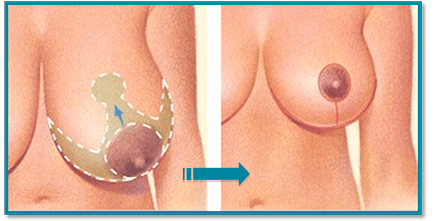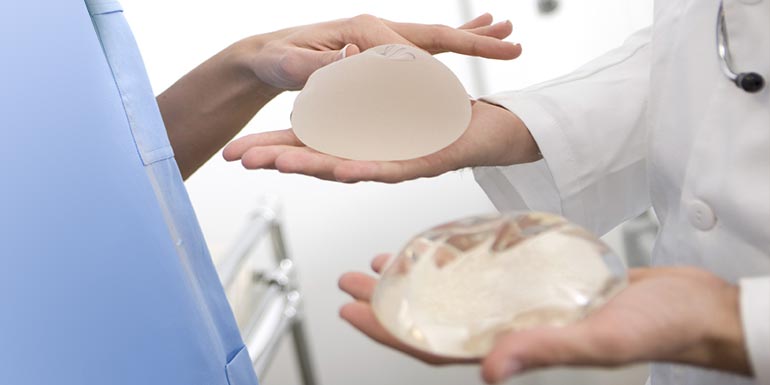Breast reduction is one of the most commonly requested procedures in plastic surgery for both aesthetic and health-related reasons. An increasing number of women are interested in this operation because overly large breasts can cause physical pain, interfere with daily life and even lead to psychological distress. In this article you will find a comprehensive guide to reduction mammaplasty: what it is, its benefits, how the procedure is performed and what postoperative care involves.
What is breast reduction?
Breast reduction, or reduction mammaplasty, is a surgical procedure aimed at decreasing breast volume, reshaping the breasts and improving their proportion relative to the rest of the body. The operation removes excess glandular tissue, fat and skin and repositions the nipple–areola complex to achieve a more balanced, natural appearance.
This surgery is often not solely cosmetic: it can have therapeutic benefits by relieving many of the physical complaints associated with excessively large breasts.
When is breast reduction indicated?
Breast reduction is recommended for women with breast hypertrophy or gigantomastia. These conditions can affect young women as well as older patients and may cause a range of problems, including:
- Chronic pain in the neck, shoulders and back.
- Difficulty sleeping or maintaining correct posture.
- Deep shoulder grooves caused by bra straps.
- Irritation and recurrent infections beneath the breast fold.
- Tingling in the arms and hands due to the weight of the breasts.
- Low self-esteem and reduced confidence.
Aesthetic and psychological reasons
Although most patients seek breast reduction for health reasons, there is also a significant aesthetic and psychological component. Many women feel that overly large breasts are disproportionate to their body shape, which can negatively impact self-image and social life. Reducing breast volume often restores harmony to the silhouette and improves self-confidence.

How is breast reduction surgery performed?
Reduction mammaplasty typically takes between two and four hours, depending on the complexity of the case. Several surgical techniques exist, but all prioritise preserving the blood supply to the nipple while removing excess tissue and reshaping the breast.
Types of incisions and scarring
The scars resulting from breast reduction vary according to how much tissue must be removed:
- Periareolar: around the areola.
- Vertical: from the areola down to the inframammary fold.
- Inverted T (anchor): around the areola, vertically and horizontally along the inframammary fold; commonly used in cases of marked hypertrophy.
After surgery, drains may be placed laterally on the breast and a compressive dressing is applied to reduce swelling and the risk of haematoma.
Benefits of breast reduction
The advantages of breast reduction extend far beyond aesthetics. Patients typically experience significant improvements in quality of life, such as:
- Immediate relief from neck, shoulder and back pain.
- Greater comfort during physical activity and exercise.
- Improved posture and better sleep quality.
- Fewer skin problems and infections under the breasts.
- Enhanced self-esteem and personal confidence.
- A lighter, firmer breast shape that is more balanced with the body.
Postoperative care after breast reduction
Postoperative care is essential to ensure a smooth recovery and satisfactory results. Although every patient recovers differently, the following recommendations are commonly given:
First weeks after surgery
- Wear a sports bra day and night for at least six weeks.
- Avoid strenuous physical activities and sports.
- Rest and take it easy during the first week, as general fatigue is common.
- Follow the prescribed course of antibiotics, analgesics and gastroprotectants as directed by your surgeon.
- Showering is generally permitted after the first 24 hours; ensure that the incisions are dried thoroughly and that antiseptic (e.g. povidone-iodine) is applied to dressings as instructed.
Scar care
Proper scar management is critical to achieving an optimal cosmetic result:
- From two weeks after surgery, perform gentle scar massage and apply topical agents such as aloe vera or rosehip oil, up to four times daily during the first six months.
- Avoid direct sun exposure of the scars for at least one year.
- Attend follow-up appointments as scheduled so the surgeon can monitor healing.
Returning to daily life
- From six weeks onward you may start wearing regular bras, although a sports bra is recommended at home for added support.
- Driving is not advised in the early postoperative period because a seatbelt impact in an accident could cause a breast haematoma and necessitate urgent surgical intervention.
- Return to work depends on the type of job, but typically occurs between two and four weeks for non-physically demanding roles.
Expected results after breast reduction
Results from breast reduction are noticeable from the first days after surgery, although the final outcome becomes clearer after several months once swelling has subsided and scars have matured.
Overall satisfaction rates are high: besides altering breast appearance, the operation frequently produces a profound improvement in the patient’s day-to-day comfort and overall quality of life.
Is breast reduction right for you?
Breast reduction is a safe and effective surgical option for women experiencing physical, emotional or aesthetic issues caused by excessively large breasts. If you recognise any of the symptoms described above and wish to improve your quality of life, the next step is to schedule a consultation with a specialised plastic surgeon. A personalised assessment will determine whether you are a suitable candidate and will result in a tailored surgical plan.
Deciding to undergo a breast reduction can transform not only your silhouette but also your wellbeing and confidence.



